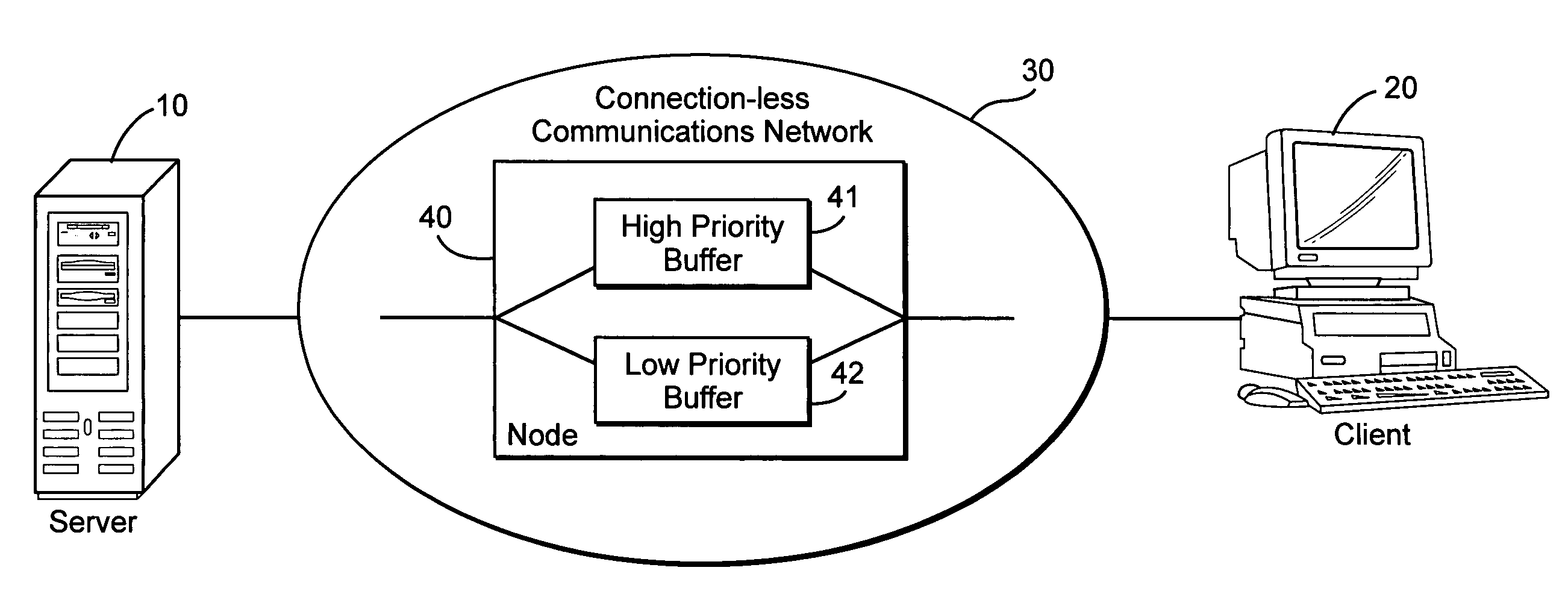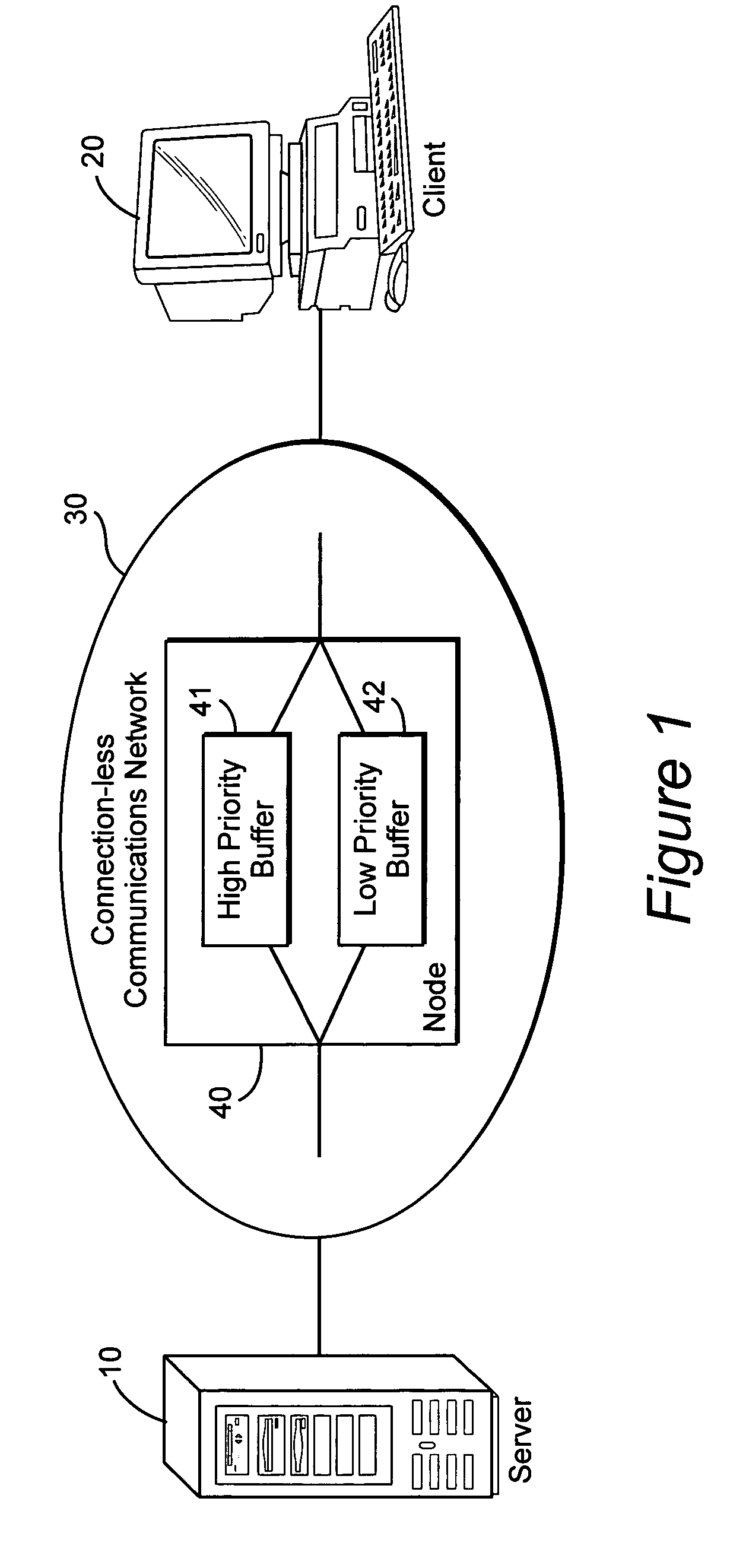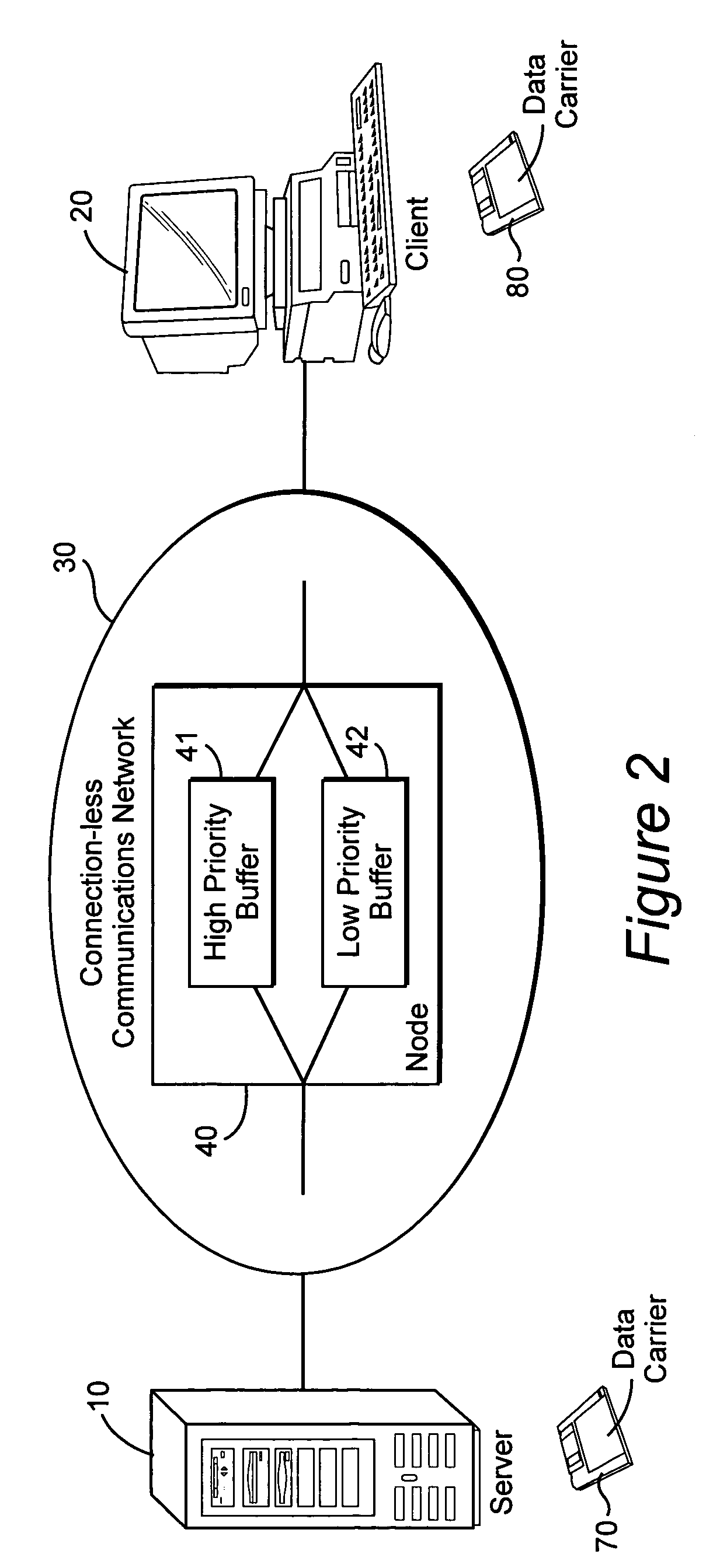Computer communication providing quality of service
- Summary
- Abstract
- Description
- Claims
- Application Information
AI Technical Summary
Benefits of technology
Problems solved by technology
Method used
Image
Examples
Embodiment Construction
[0019]FIG. 1 shows a schematic depiction of a communications network over which a method of communication according to the invention may be used. Server computer 10 is connected to client computer 20 via a connection-less communications network 30, which includes at least one network node 40 in the communication route between the server computer 10 and the client computer 20. Each network node comprises two buffer elements 41&42, into which arriving packets are sorted on arrival at each network node. A flag in the header of each data packet determines which buffer element the packet is switched into. One of the buffer elements 41 is designated as a high priority buffer whilst the other buffer element 42 is designated as a low priority buffer. The high priority buffer 41 has preferential access to the output of the network node such that a majority of the bandwidth used by the network node is reserved for the high priority buffer. The remainder of the output bandwidth of the network ...
PUM
 Login to View More
Login to View More Abstract
Description
Claims
Application Information
 Login to View More
Login to View More - R&D
- Intellectual Property
- Life Sciences
- Materials
- Tech Scout
- Unparalleled Data Quality
- Higher Quality Content
- 60% Fewer Hallucinations
Browse by: Latest US Patents, China's latest patents, Technical Efficacy Thesaurus, Application Domain, Technology Topic, Popular Technical Reports.
© 2025 PatSnap. All rights reserved.Legal|Privacy policy|Modern Slavery Act Transparency Statement|Sitemap|About US| Contact US: help@patsnap.com



